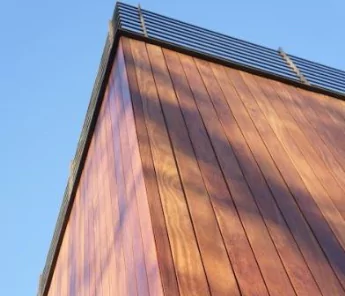
Related Posts
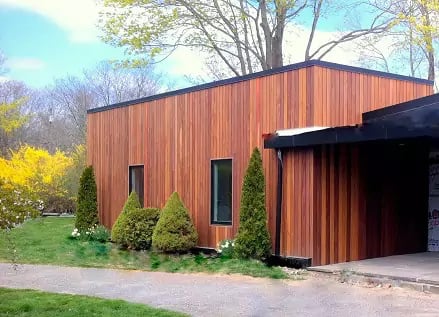
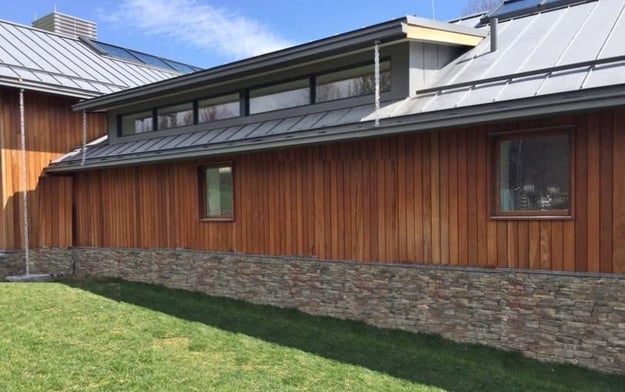

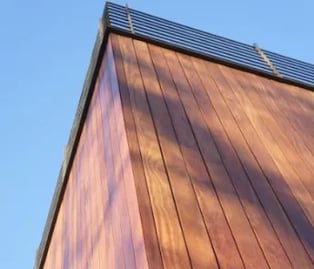
The wood cladding species that we have selected for best results with the Climate-Shield Rain Screen Wood Siding System are Mataverde Premium Ipe hardwood siding, FSC Santa Maria wood cladding, FSC Certified Machiche wood cladding, Garapa hardwood cladding and Cumaru hardwood siding. These rainscreen wood siding species are all very effective because they are either kiln dried or stable enough that any tangential shrinkage of the boards will be minimal. In a horizontal rainscreen installation, shrinkage that may occur during the acclimation period will be hidden by the design of the rainscreen siding profile and the effects of gravity will allow the boards to settle into the lower clip.
In a vertical rainscreen installation, however, the force of gravity offers no benefit of helping the wood to settle into the “bottom clip” because there is no ‘bottom’ rainscreen clip – the clips are placed to the left and right hand side of the boards. Without the aid of gravity, vertical rainscreen siding boards may have a tendency to move left and right with expansion and contraction during the initial acclimation period. This condition will be minimized after the wood achieves the local EMC (Equilibrium Moisture Content) in most geographical areas that have a relatively stable EMC year round.
 It is possible on a vertical rainscreen application that a vertical wood rainscreen siding board has shrunk during the acclimation period and one or of the rainscreen clips have become visible. If this happens, the simple solution is to tap the boards back into the proper alignment. If there are any stubborn siding boards, they can be drilled and screwed through the top flange of the siding to hold them into place permanently.
It is possible on a vertical rainscreen application that a vertical wood rainscreen siding board has shrunk during the acclimation period and one or of the rainscreen clips have become visible. If this happens, the simple solution is to tap the boards back into the proper alignment. If there are any stubborn siding boards, they can be drilled and screwed through the top flange of the siding to hold them into place permanently.
When designing a vertical wood rainscreen application, using narrower siding boards is a great idea. The narrower the width of the rainscreen boards, the less effect dimensional changes in the wood siding will affect the appearance of your design over time. Specifying wood siding species that have better strength and dimensional stability is another excellent design decision. Allowing the wood siding to fully acclimate on site before installation is extremely helpful, too. Kiln drying the wood siding material to as close as the local EMC will also help minimize dimensional changes in exterior wood siding.
 When using different species of wood that have varying tangential and radial expansion/ contraction values, it is imperative that the wood siding be fully acclimated to the local conditions. Having the material kiln dried to these moisture levels is very helpful and will work in theory, but in reality, each different species will require its own kiln drying schedule and, even then, there is still some moisture variation from piece to piece and even within different parts of the same board. The best solution for long term successful results is to allow the rain screen wood cladding material to fully acclimate to local conditions prior to installation.
When using different species of wood that have varying tangential and radial expansion/ contraction values, it is imperative that the wood siding be fully acclimated to the local conditions. Having the material kiln dried to these moisture levels is very helpful and will work in theory, but in reality, each different species will require its own kiln drying schedule and, even then, there is still some moisture variation from piece to piece and even within different parts of the same board. The best solution for long term successful results is to allow the rain screen wood cladding material to fully acclimate to local conditions prior to installation.
In full, unobstructed southern and western exposures the UV effects of the sun can wreak havoc on exterior woods. “Baking” exterior woods quickly can be very damaging to the appearance of the wood- it may cause excessive surface checking, possibly cracks and undue shrinkage.
The best solutions for this are to prevent or minimize this from happening in the first place:
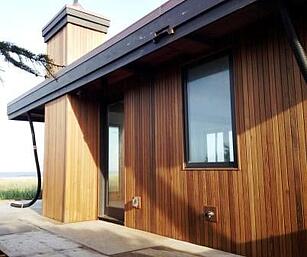
• Make sure the exterior wood siding is kiln- dried to the approximate equilibrium moisture content (EMC) of the geographic area where it will be installed.
· • Allow the exterior wood to fully acclimate on site. Many experienced carpenters will tell you the best way to acclimate your exterior wood siding material are to store this material on site, fully “stickered” with spacers for adequate air flow, in a shady area on the site.
· • Putting a UV inhibiting sealer on exterior wood is also highly recommended. It is like putting on sunscreen at the beach. A UV inhibiting sealer will help protect the surface of the wood while it acclimates in a similar manner as the way sunscreen protects your skin- it minimizes damage of harmful UV rays.
· • On southern and western exposures particularly, it is a good idea to consider placing your rain screen clips closer together, especially in a vertical wood rainscreen application
Please visit our website for additional information about rain screen systems, vertical rainscreen design and architectural cladding options:
Climate-Shield Rain Screen System
Architectural Rainscreen Details
REQUEST A FREE RAIN SCREEN QUOTE TODAY
For additional information about rain screen design and rainscreen systems, please feel free to download, "The Ultimate Guide to Building Green with Rain Screen Wood Siding". Download this FREE Rain Screen Guide by clicking on the button below:


